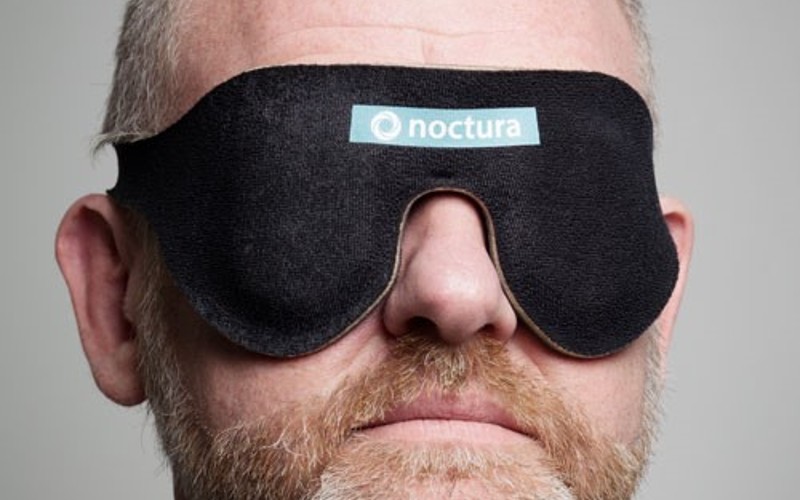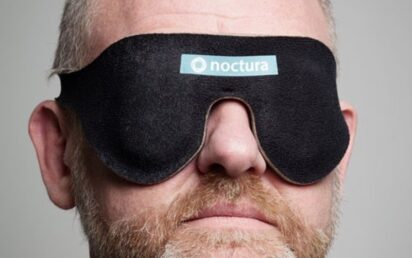As a long-term diabetic, my dad has worried about his eyesight for years.
In conversation with PolyPhotonix CEO Richard Kirk recently, I was finally able to understand why.
The Sedgefield-based business has developed a patented non-invasive treatment for diabetic retinopathy, a condition considered the leading cause of preventable blindness among working-age individuals in the Western world.
“When you turn off your lights at night, you can’t see anything. But when you go to the bathroom at 3am, you can see everything,” Kirk tells BusinessCloud. Known as ‘dark adaptation’, this process takes about 40 minutes.
“You have two types of photoreceptor in your eye – the cone and the rod – which are used for your central and peripheral vision respectively,” continues Kirk. “We use our rods to see at night, which is evolutionary: if you need to escape a sabre-toothed tiger in the dark, you need night vision!
“It’s only in the last 100 years or so that we’ve had electric light, which means we don’t have to use our rods anymore… most people don’t actually use them other than to stumble to the bathroom.
“Your rods have dark adapted – but to do that they need oxygen. So at night, counter-intuitively, your eye uses more oxygen than it does in the day. When you go to sleep, all of a sudden you get this big oxygen demand, which is your rods saying ‘get ready – we might need to run away from a predator!’”
Blindness
This is not an issue in healthy individuals but can cause a huge problem for elderly or diabetic people.
“Because the oxygen demand doubles, the body responds by creating new vessels in the eye; if you’re diabetic, these new vessels are compromised and begin to leak fluid,” he explains. “This causes the back of the eye – the macula – to swell and thicken.
“That impairs your eyesight – and you start to go blind.”
There are now around four million diabetics in the UK. Nine in 10 of those with Type 1 diabetes will develop diabetic retinopathy within 10 years, while two-thirds of those with Type 2 diabetes will do so in the same time frame.
The most common treatment is to laser a few square millimetres of the vessel to cauterise it, which also damages the photoreceptors underneath. Kirk says people who have undergone several laser treatments can start to lose their peripheral vision then their night vision. “Increasingly, you are seeing people in their 30s with diabetes losing their driving licences, their ability to work and their eyesight – and all because of the treatment.”
When the patient’s central vision is affected by the disease, the common approach is to inject into the eye. “The back of the eye is actually brain tissue that’s been pushed forward,” says Kirk. “The problem when trying to treat anything inside the brain is the blood barrier around it, which blocks drugs taken orally from getting inside. Hence why you have to inject.
“Injecting into the eye repeatedly is not a good thing.”
Noctura 400
PolyPhotonix’s Noctura 400 sleep mask reduces and reverses the effects of diabetic retinopathy by delivering light therapy into the eyes during a patient’s normal hours of sleep, reducing the risk of hypoxia and retinal damage.
“We control the type of light going into the eye with very, very precise wavelengths which only the rod sees. If the cone could see it, it would be like trying to go to sleep under full sun,” says Kirk. “It prevents the rod from dark adapting.
“We break the vicious circle by tricking the brain into thinking it’s not asleep when it actually is.”
PolyPhotonix has raised around $25 million total funding, including $14m through NHS and government grants. More than a decade in the making, its mask is already in use in Europe – including the UK, France and Portugal – while the company has entered a global strategic alliance with Prevail InfoWorks to lead FDA-regulated human clinical trials in the US.
You can read about Kirk’s journey from celebrated artist to medical entrepreneur – and how he built this business in a less dysfunctional way to his first venture – in the story below.
Despite the NHS funding and estimated cost savings in the hundreds of millions of pounds, it is not yet available on the Health Service – although it is hoped that it soon will be.
“The NHS funds innovation and research, but it doesn’t adopt new technology quickly – and that is a huge problem for us because it’s our incumbent market,” sighs Kirk.
“It always amazes me when I talk to people with this disease, witness them making a calculation then choosing to wait a few years for our treatment to become available on the NHS. Once the eyesight has gone, you can’t get it back.”
Meanwhile my father, who developed Type 2 diabetes around 30 years ago, began using the mask a few days ago and says he is already quite comfortable with it.
1.7 million hours
“We’ve had about 1.7m hours of patient use to date and we haven’t had a serious event reported,” says Kirk. “After the first couple of weeks, patients actually start to quite like using the mask. They get into the routine.
“We have one patient who has been with us for about six years. After the first year, when she was in her late 60s, she called me in some distress to say: ‘Richard, the mask isn’t working. My eyesight is getting worse!’
“We measured her eyes and the optometrist said: ‘You don’t need to wear glasses anymore.’ Because she’d been wearing glasses since she was 17, she was so used to waking up in the morning and immediately putting her glasses on that she was still doing it!”
A key function of the mask is its intelligence. “Everybody keeping a sleep diary in a trial will tell you what they think you want to hear – that they have worn the mask every night. We worked out years ago that if we were going to have any chance of doing a proper trial, we needed to know if they actually used it. It’s very precise: we can tell when you went to the bathroom and if you’ve had a late night or a lie-in.
“It means our data is really accurate; but it’s also an important tool for selling the business. If you don’t use a treatment, you can’t derive any benefit from it: if you’re an insurer or somebody who’s prescribing the mask, and giving it to patients who just don’t use it, you need to know that.”
Kirk believes PolyPhotonix can become a future unicorn, which will in turn help more people with their eyesight.
“We hope to have exited in the next 3-5 years. This has the potential to be a billion-dollar business – but it will be very difficult for PolyPhotonix to take it that far.
“Hopefully we will be in partnership with a global major and delivering it all over the world. All we have to do is run a good trial, gain FDA approval and we’re into a market worth billions and billions.
“In most parts of the world, outside of the Western world, if you have this disease, you go blind because you can’t afford the other treatments. The advantage of our treatment is that it’s a fraction of the cost of other treatments.”
One factor will decide whether your business succeeds – people


